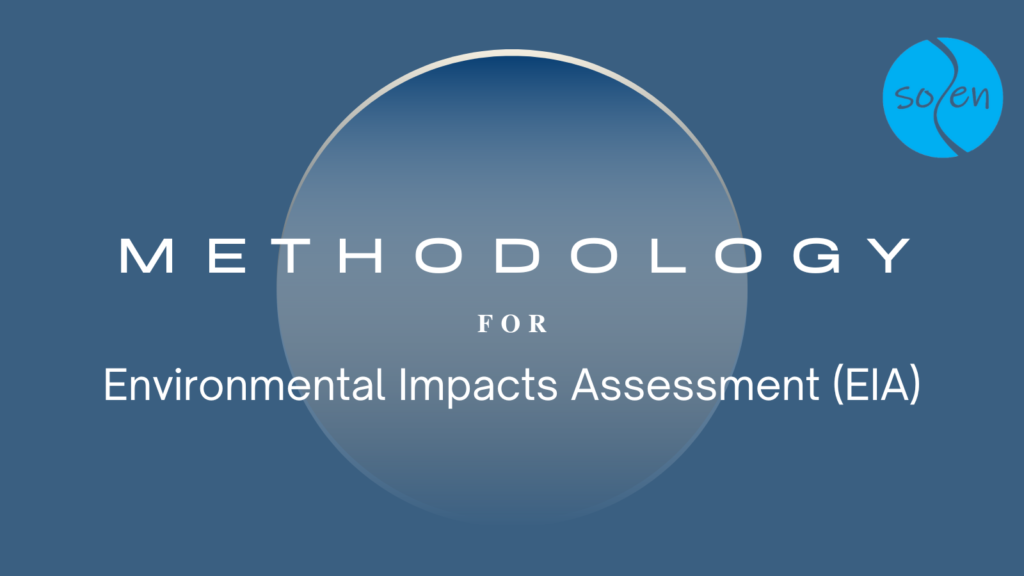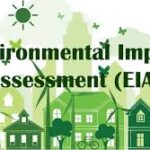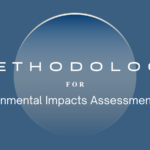Environmental Impact Assessment (EIA) methodologies refer to the various approaches and techniques Which can be used to assess the potential environmental impacts of proposed projects. These methodologies provide systematic frameworks for identifying, predicting, and evaluating environmental effects and also for developing strategies to mitigate or manage those effects.

Criteria for the Selection of EIA Methodologies:
When choosing an EIA methodology, several factors are considered to ensure its appropriateness and effectiveness. These criteria may include:
- Project Characteristics: The size, complexity, and nature of the project influence the choice of methodology.
- Available Data and Resources: The availability of baseline data, expertise, and financial resources can affect the selection.
- Regulatory Requirements: Compliance with legal and regulatory frameworks governing EIA may dictate the choice of methodology.
- Stakeholder Involvement: The extent to which stakeholders are involved in the process may influence the methodology chosen.
- Environmental Sensitivity: The sensitivity of the project area and potential environmental impacts may guide the selection of a suitable methodology.
- Time and Budget Constraints: The timeline and budget allocated for the EIA process can impact the choice of methodology.
EIA Methods:
There are several methods commonly used in EIA, including:
1. Ad-hoc Methods:
- Description: Ad-hoc methods are customized approaches developed specifically for a particular project or situation. They are flexible and tailored to address the unique characteristics and potential impacts of the project.
- Application: Ad-hoc methods are useful when existing standardized methods are not suitable or when the project involves complex or novel environmental considerations.
- Advantages: Offers flexibility and adaptability, allowing for customization to project-specific needs. Can incorporate innovative approaches and local knowledge, potentially leading to more accurate and relevant assessments.
- Limitations: May lack standardized procedures, making it challenging to compare results across different projects. Requires expertise and resources to develop and implement effectively.
2. Matrix Methods:
- Description: Matrix methods consist of developing a matrix that catalogs project activities or components in rows, with potential environmental impacts listed in columns. The significance is assessed by evaluating the intersection of each activity with each impact.
- Application: Matrix methods are useful for systematically identifying and evaluating potential environmental impacts associated with different project activities.
- Advantages: Provides a structured framework for assessing impacts and their significance. Helps in organizing and synthesizing information, facilitating decision-making.
- Limitations: May oversimplify complex relationships between project activities and environmental impacts. Requires careful consideration of weighting factors to ensure accuracy.
3. Network Method:
- Description: The network approach employs diagrams or networks for the visual representation of the relationships among project elements and environmental factors. It aids in recognizing intricate interactions and dependencies that could affect environmental impacts.
- Application: Network methods are useful for understanding the interconnectedness of various project elements and their potential effects on the environment.
- Advantages: Provides a visual representation of complex relationships, aiding in the identification of potential impacts and their interactions. Facilitates communication and collaboration among stakeholders.
- Limitations: May require specialized expertise and resources to develop and interpret network diagrams accurately. The complexity of the diagrams can make them challenging to understand for non-experts.
4. Environmental Media Quality Index Method:
- Description: This approach assesses the quality of various environmental elements, including air, water, and soil, by applying specific criteria and assigning scores to each. The cumulative index score offers a measure of the general environmental health or condition of the targeted area.
- Application: The Environmental Media Quality Index method is useful for assessing the overall environmental condition of a given area by considering multiple environmental parameters simultaneously.
- Advantages: Provides a comprehensive assessment of environmental quality by considering multiple media and parameters. Allows for comparisons across different locations or time periods.
- Limitations: Requires reliable data on environmental parameters to calculate index scores accurately. The interpretation of index scores may be subjective and influenced by the choice of parameters and weighting factors.
5. Overlay Methods:
- Description: Overlay methods consist of superimposing maps of various environmental factors, such as land use, habitats, and sensitive areas, to pinpoint overlapping regions and potential impacts. This technique of spatial analysis aids in the visualization and comprehension of cumulative effects.
- Application: Overlay methods are useful for identifying areas of environmental sensitivity or conflict and for assessing cumulative impacts resulting from multiple stressors.
- Advantages: Provides a spatially explicit analysis of environmental conditions and potential impacts. Facilitates the identification of priority areas for conservation or mitigation measures.
- Limitations: Requires accurate and up-to-date spatial data layers for meaningful analysis. May be computationally intensive and require specialized GIS expertise.
6. Cost/Benefit Analysis:
- Description: Cost/benefit analysis is a method used to assess the economic feasibility of a project by comparing its costs and benefits. It involves quantifying the monetary value of project impacts and comparing them to determine whether the benefits surpass the costs.
- Application: Cost-benefit analysis is a valuable tool for evaluating the economic impact of proposed projects and guiding decision-making by comparing the financial costs against the benefits of various options.
- Advantages: Provides a systematic framework for evaluating the economic implications of projects and for comparing alternative courses of action. Helps in optimizing resource allocation and maximizing societal welfare.
- Limitations: Requires accurate estimation of costs and benefits, which may be subject to uncertainty and variability. This approach can sometimes neglect the non-monetary values and intangible benefits or costs related to environmental and social impacts.
Each of EIA methodologies presents unique advantages and limitations. The selection of a method should align with the specific needs and goals of the assessment. Combining various methods and approaches can yield a more thorough comprehension of potential environmental impacts, thereby aiding in making well-informed decisions.
Continue Your Read: All about ENVIRONMENTAL IMPACT ASSESSMENT





